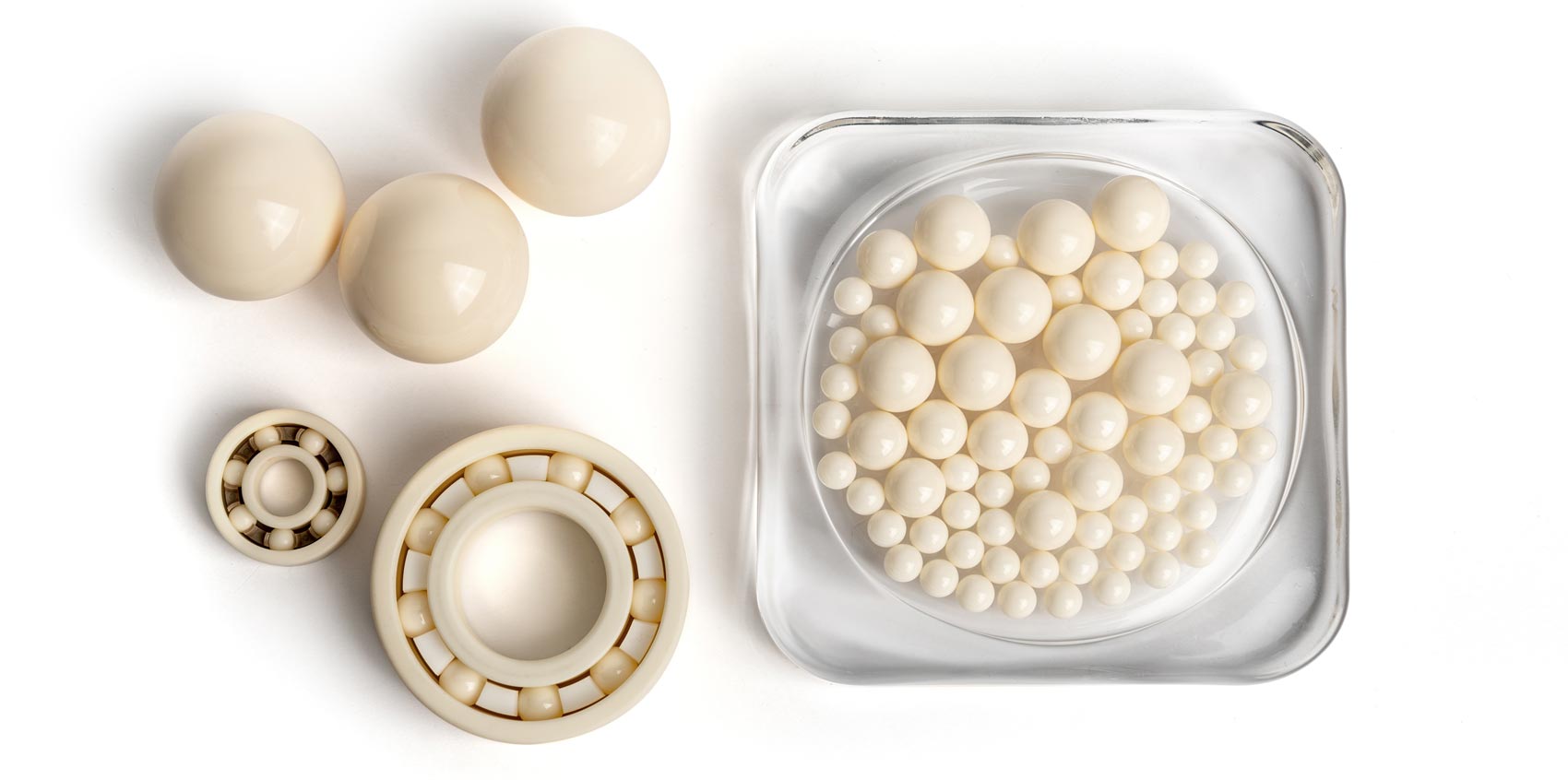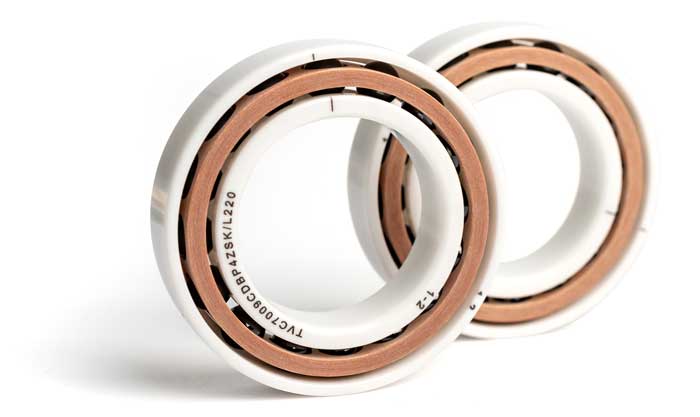Full ceramic bearings
with rings and rolling elements in ceramic.

Bearings are fundamental to ensuring the effective operation of machines and systems.
Almost all existing bearings comprise rings and rolling elements in 100Cr6 (categorised as “bearing steel”). These are described as standard bearings.
Bearing types and geometries have long been coded and standardised, but in recent years the materials used to make bearings have undergone a technological leap. The ultimate goal of this development process is to increase bearing performance so that the machines and systems in which bearings are used perform better too.
Ceramic bearings were created with exactly this purpose in mind.
Ceramic bearings are bearings in which the rolling elements are made of ceramic.
They are divided into two families according to the materials used to make the rings:
Full ceramic bearings
with rings and rolling elements in ceramic.
Hybrid bearings
with rings made of 100Cr6 bearing steel or AISI420 or AISI440C stainless steel and rolling elements made of ceramic.

The ceramics commonly used for full ceramic bearings are:
Bearings can be made up of a combination of rings and balls in different ceramic materials; the choice is dictated by the working conditions and performance to be achieved.


